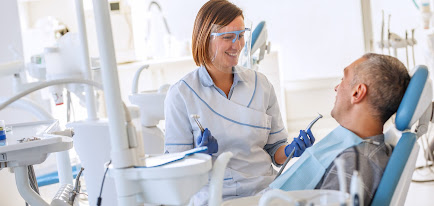Phoenix's top dentist reveals the latest trends in oral care technology
In the ever-evolving field of dentistry, staying up-to-date with the latest trends and advancements in oral care technology is crucial. With new innovations emerging each year, it becomes increasingly important for dental professionals to incorporate these advancements into their practices. Phoenix, known for its vibrant healthcare community, is home to some of the top dental experts who are at the forefront of integrating cutting-edge technologies into their treatments. In this article, we will delve into the insights shared by one such expert – Dentist Phoenix AZ – as they reveal the latest trends in oral care technology that are shaping the future of dental care.
The evolution of dental technology
One of the most prominent advancements in dental technology is the introduction of digital imaging devices. These devices, such as intraoral cameras and digital x-rays, provide dentists with a more accurate and detailed view of a patient's oral health. Intraoral cameras allow dentists to capture high-resolution images inside the mouth, enabling them to detect problems that may not be visible to the naked eye. Digital x-rays, on the other hand, emit lower levels of radiation compared to traditional film-based x-rays while providing instant results for improved diagnostics.
Another significant breakthrough in dental technology is the rise of CAD/CAM systems in restorative dentistry. Computer-aided design (CAD) and computer-aided manufacturing (CAM) technologies have revolutionized how dental crowns, veneers, and bridges are created. With these systems, dentists can now digitally scan a patient's teeth and generate precise 3D models for creating custom restorations using computer-controlled milling machines. This not only enhances the accuracy and fit of dental restorations but also reduces the time required for fabrication from weeks to hours.
Overall, the evolution of dental technology has significantly improved oral care diagnostics and treatments by introducing digital imaging devices for better visualization inside the mouth and CAD/CAM systems for more efficient restorative procedures. These advancements not only benefit patients by enhancing treatment outcomes but also empower dentists with advanced tools to provide comprehensive oral care services effectively.
Digital dentistry and its benefits
Digital dentistry is a rapidly advancing field that utilizes cutting-edge technology to improve oral care practices. One of the main benefits of digital dentistry is increased accuracy and precision in dental procedures. With the use of digital scanning, dentists can create precise 3D models of patients' teeth, allowing for more accurate diagnoses and treatment planning. This eliminates the need for messy traditional impressions and reduces patient discomfort.
Another notable advantage of digital dentistry is improved efficiency and time-saving. Digital tools such as CAD/CAM systems enable dentists to design and fabricate dental restorations, such as crowns or veneers, in-house within a matter of hours. This means that patients no longer have to endure multiple appointments spread out over several weeks before receiving their permanent restorations.
Advanced diagnostic tools for better treatment outcomes
One of the latest trends in oral care technology is the use of advanced diagnostic tools for better treatment outcomes. These tools are designed to provide dentists with more accurate and detailed information about a patient's oral health, allowing them to diagnose and treat issues more effectively. One example of an advanced diagnostic tool is digital imaging, which allows dentists to capture high-resolution images of a patient's teeth and gums. This technology provides a clear view of any potential dental problems, such as cavities or gum disease, helping dentists make more informed treatment decisions.
Another advanced diagnostic tool that is becoming increasingly popular in oral care is cone beam computed tomography (CBCT). CBCT uses a cone-shaped X-ray beam to create three-dimensional images of a patient's mouth, including the teeth, jawbone, and surrounding structures. This technology provides valuable insights into conditions that may not be visible through traditional X-rays alone, such as impacted wisdom teeth or temporomandibular joint disorders. By using CBCT scans alongside other diagnostic tools, dentists can develop comprehensive treatment plans tailored specifically to each patient's needs.
The rise of teledentistry during the pandemic
One of the most significant trends in oral care technology that has emerged during the pandemic is the rise of tele-dentistry. With social distancing measures in place and people reluctant to visit crowded dental clinics, teledentistry offers a safe and convenient alternative for patients to receive dental consultations remotely dental implant Phoenix. Through video calls or phone conversations, dentists can assess patients' oral health conditions, provide advice on home care routines, and even prescribe medications when necessary.
Tele-dentistry not only benefits patients but also helps dental professionals streamline their operations. By utilizing digital platforms and advanced imaging technologies, dentists can efficiently diagnose various oral issues without requiring an in-person visit. Moreover, this technology allows for seamless communication between dentists and other healthcare providers, enabling them to collaborate effectively on treatment plans for complex cases.
As the demand for tele-dentistry continues to grow during the pandemic, Phoenix's top dentist emphasizes the importance of embracing this technology as an integral part of modern oral care practices. The convenience it offers coupled with its ability to ensure continued access to essential dental services positions tele-dentistry as a valuable tool both during these challenging times and beyond.



Comments
Post a Comment